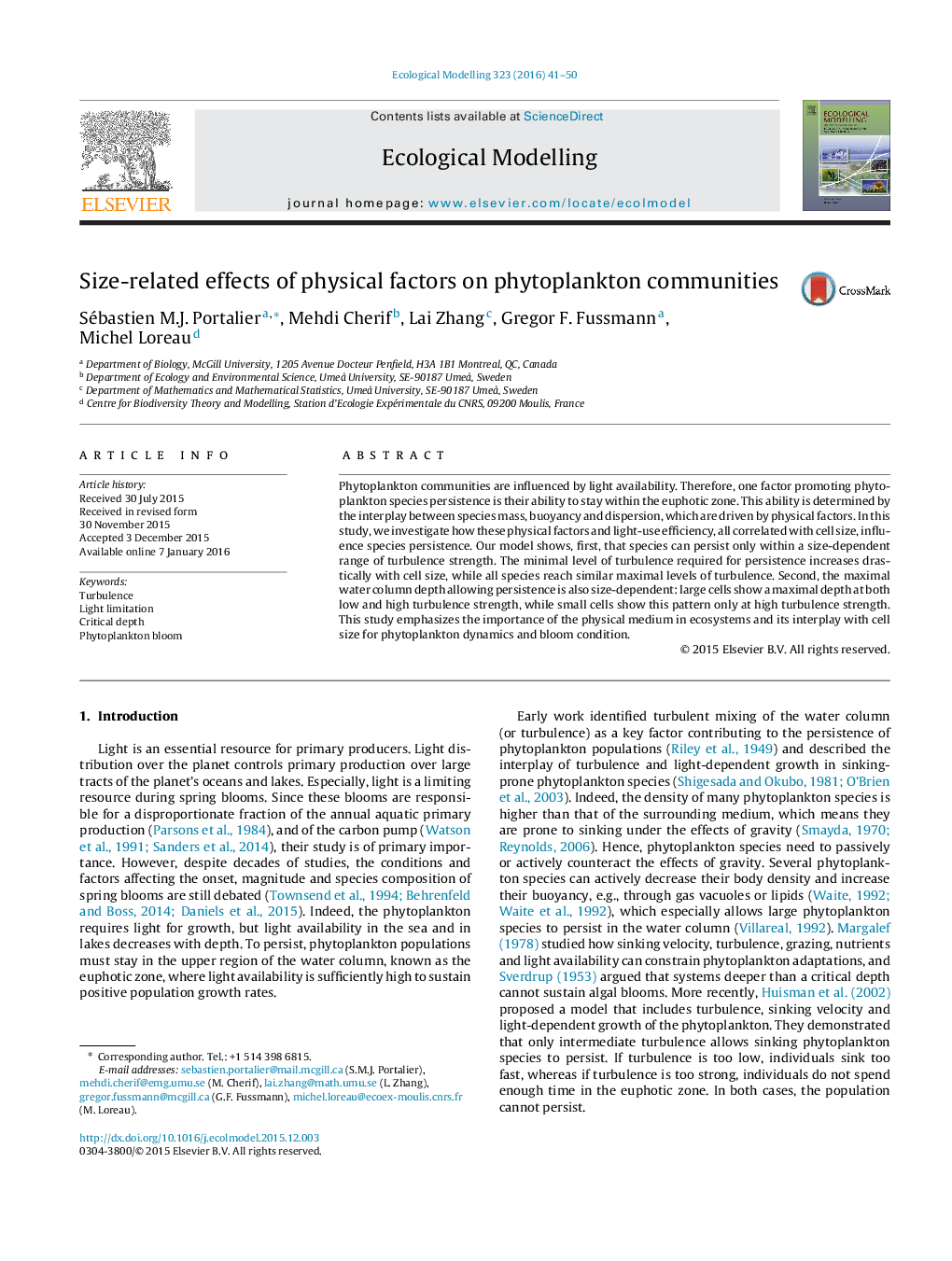| Article ID | Journal | Published Year | Pages | File Type |
|---|---|---|---|---|
| 4375592 | Ecological Modelling | 2016 | 10 Pages |
•We study how environmental factors and cell size structure phytoplankton communities.•Species can persist only within a size-dependent optimal range of turbulence.•Large cells need stronger turbulence for persistence than smaller cells.•The upper turbulence threshold is less size-dependent.•The maximal water column depth allowing persistence is also size-dependent.
Phytoplankton communities are influenced by light availability. Therefore, one factor promoting phytoplankton species persistence is their ability to stay within the euphotic zone. This ability is determined by the interplay between species mass, buoyancy and dispersion, which are driven by physical factors. In this study, we investigate how these physical factors and light-use efficiency, all correlated with cell size, influence species persistence. Our model shows, first, that species can persist only within a size-dependent range of turbulence strength. The minimal level of turbulence required for persistence increases drastically with cell size, while all species reach similar maximal levels of turbulence. Second, the maximal water column depth allowing persistence is also size-dependent: large cells show a maximal depth at both low and high turbulence strength, while small cells show this pattern only at high turbulence strength. This study emphasizes the importance of the physical medium in ecosystems and its interplay with cell size for phytoplankton dynamics and bloom condition.
